Mowing height has a significant impact on the overall health of your lawn. Lawn grasses only tolerate mowing; it is an injury that requires recovery.
Lawn Ideas, Tips & Guides
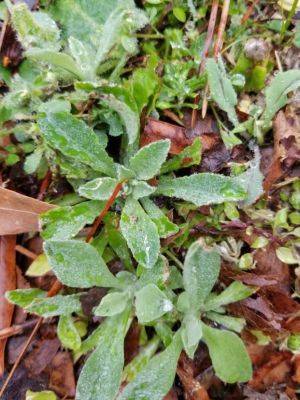
Weed of the Month – Cudweed
Cudweeds (Gamochaeta spp.) are herbs in the aster family that serve as host plants for American painted lady caterpillars. There are about fifty plus species, and all are native to the Americas. Most cudweeds are annuals and can be either winter or summer annuals. They flower in mid-spring to early summer or in early fall. Some cudweeds can be biennial, meaning that they will form a basal rosette that can survive the winter and flower in their second year.
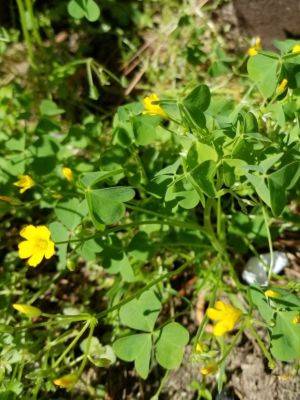
Weed of the Month – Yellow Woodsorrel
Yellow woodsorrel, also commonly called oxalis, is a perennial weed that grows throughout the year. It is often confused with clover; both have trifoliate leaves. Oxalis flowers have five petals, and the leaves are divided into three partly-folded, heart-shaped lobes.
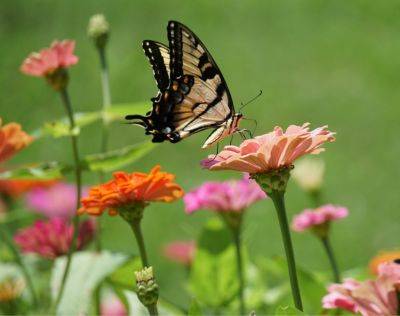
Clemson Extension Wants Your Input
Interest in home gardening has flourished throughout the COVID-19 pandemic. In response, Clemson Extension’s Horticulture team is evaluating the best ways to meet the growing public demand for gardening knowledge.
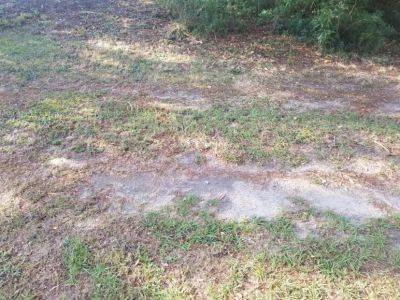
Why You Should Aerate Your Lawn
Aeration is a cultural practice that does not need to be done often but can provide immense benefits for your lawn.
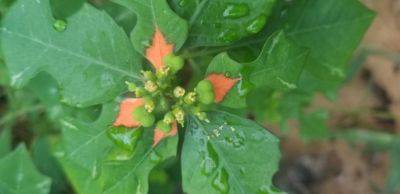
Weed of the Month – Wild Poinsettia / Desert Poinsettia
This North American native plant is a relative of the popular holiday poinsettia. Both plants are members of the euphorbia family. This plant is sometimes grown for the colorful green and orange bracts, but it is considered a weed.
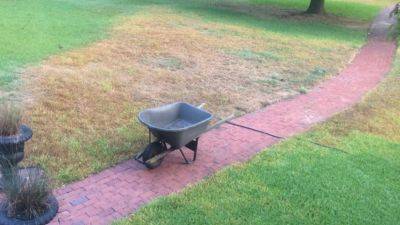
Scouting for Lawn Insects
The dog days of summer can be brutal on your lawn, especially if you have an insect attacking the grass. Insect damage can occur on both the blades and the roots and can cause yellow to brown patches and thinning turf. Before applying an insecticide, it is best to confirm the presence of a turfgrass pest. Soil compaction, improper mowing, and overwatering can also lead to thin, patchy turfgrass. There are three main ways to scout for turfgrass insects: soap flush, floatation, and soil examination. It is best to inspect multiple spots in the lawn and correctly identify the pest.
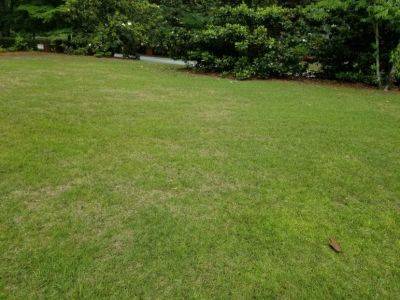
How Often Should A Lawn Be Watered?
Proper irrigation can make a big difference in the health of your lawn. Most turfgrasses need about an inch of water a week. Use a rain gauge and monitor the forecast to help determine when to supplement rainfall with irrigation. To make this easier for you, add rain sensors to the irrigation system. Rain sensors will help ensure that water is conserved and only applied as needed. How often you water your lawn should be determined by your soil type because they retain water at different rates. Clay particles are tiny and hold onto water tightly. Plants have difficulty exerting enough force to break the bonds between the clay soil particles and the water when there is not enough water in the soil. So, it is best to deliver 1 inch of water for lawns with heavy clay soil all in one irrigation event. Sandy soils do not hold tightly onto water. Their large particles allow the soil to drain easily, and very sandy soils should get 1/3 of an inch of water three times a week. Sandy to loamy soils should receive around ½ inch twice a week. For help determining your soil type, see HGIC 1656, Soil Texture Analysis “The Jar Test”. For more information on irrigating different soils, see HGIC 1805, Landscape Irrigation Management Part 6: Soil Type & Irrigation Frequency.

Plan Winter Weed Control Now
It still feels like summer, but it is already time to start thinking about winter weed control. Annual winter weeds germinate late summer through fall and slowly grow during the winter months. They flower and produce seeds in late winter and early spring. Luckily, there are a few practices that can limit winter weeds.

Should You Overseed Your Warm-Season Lawn?
Do you dream of a lawn that is green year-round? Warm-season grasses turn brown in cooler weather, and although natural, some people turn to the practice of overseeding to maintain a green lawn year-round. While overseeding is done on golf courses and sports fields to mitigate traffic during the winter, in home lawns it is mainly done for aesthetics. A temporary rye lawn can be useful to control erosion, but the practice is not recommended for healthy, well-established warm-season grasses.
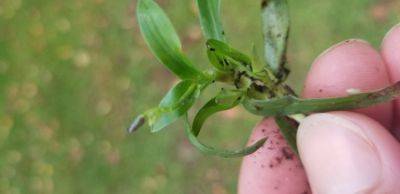
Weed of the Month – Doveweed
Doveweed is a summer annual broadleaf weed in the dayflower family. It has a low-growing, very grass-like habit and appearance. It produces stolons (creeping horizontal stems) and can rapidly grow from segments distributed by mowing. The leaves can easily be confused with centipede and St. Augustine grass blades. Doveweed is easily overlooked unless it has choked out large patches of the desirable turfgrass. Doveweed seeds can stay viable in the soil for several years, so achieving control of the weed can take multiple seasons. Fortunately, cultural controls can help to limit doveweed infestations.

Should I Water My Plants in the Winter?
It should go without saying that water is vital for plant survival. Plants use water for photosynthesis, transporting water-soluble nutrients, and maintaining turgidity. Turgidity is the water pressure against the inside of a plant’s cell walls that keep plants upright and supple. When a plant lacks water, decreased turgor pressure causes the plant to wilt. During the spring, summer, and fall, wilted leaves indicate a plant lacks water, and experienced gardeners know supplemental water is necessary to ‘perk it up.’ But during the winter, when many plants lose their leaves or wilting leaves are harder to recognize, how do gardeners know when to water?
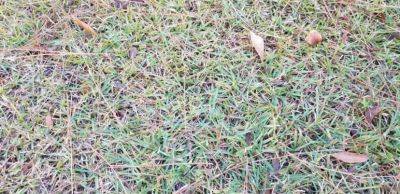
Watering Warm-Season Lawns During Winter
Most years, South Carolina receives several inches of rain during the fall and winter. This year, however, we have been on the dry side. We have also been having warmer than average days, and your landscape may need supplemental irrigation.
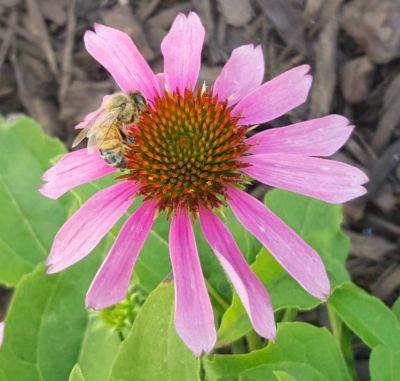
Too Much Turf? Think About A Meadow Garden
Turfgrass is the largest or one of the largest crops in America, and you can’t eat it or wear it. In addition, it requires water, fertilizer, and a tremendous amount of energy to maintain. Given that many of our lawns are high maintenance, some folks might consider reducing the size of their lawn by using native grasses and flowering perennials in borders instead. Here are a few ideas for layout and planning a border meadow. Generally, the plants are not over 3 feet tall, and ornamental grasses are the dominant group. However, upon closer inspection, you will also see groups of plants from other families interesting to people, pollinators, and birds. They support wildlife and may reduce the homeowner’s use of irrigation, fertilizer, and pesticides.
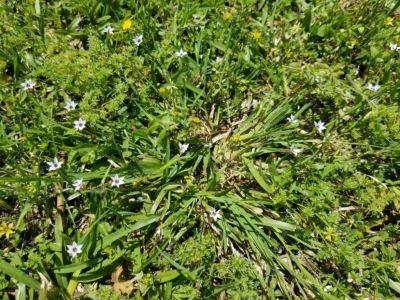
Weed of the Month – Blue-eyed grass
Blue-eyed grass (Sisyrinchium angustifolium) is a beautiful native plant in the iris family. This perennial plant looks very similar to thicker bladed turfgrasses and can survive in the lawn without detection until it blooms in April. This plant thrives in moist, well-drained soils. Although once established, it can occasionally tolerate dry conditions.

Burweed: A Pain in the Foot
It’s a beautiful spring day, and you’re tempted to walk barefoot across your lawn. It can be a painful experience if you have a nasty cool-season weed called burweed (Soliva sessilis) growing in your turfgrass. When the spring temperatures begin to warm up, this signals the plant to produce seeds. The seeds have sharp spines that will stick to anything they contact, including your bare feet and your pet’s paws. The stickers will also embed into the soles of your shoes, enabling seeds to be spread further around your landscape.
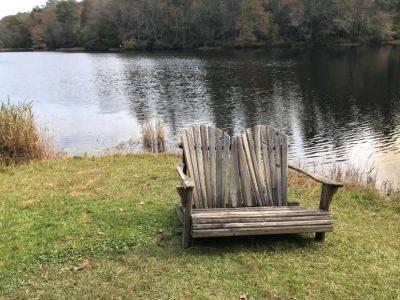
A Healthy Pond Starts in Your Landscape
What leads to a healthy (or unhealthy) pond? Look upstream to find out. Many of the pollution sources that can lead to algae issues, low dissolved oxygen, muddy water, and poor fish habitat in ponds often originate from the landscape that surrounds it. Runoff can carry excess nutrients, organic matter, sediment, and bacteria from your yard into your pond and can contribute to unhealthy pond conditions. Fortunately, there are simple actions you can take to help.
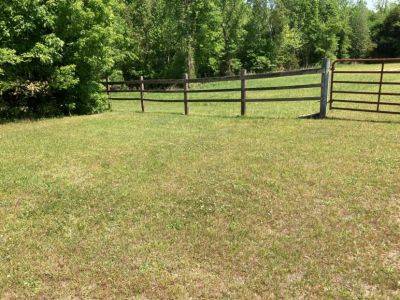
Herbicides in the Heat
So, I am just enjoying my time in my yard, throwing a ball for my dogs, Penny and Ruby, who may or may not bring it back when I spot a small clump of weedy plants in my lawn. Instead of heading straight for my herbicide cabinet. I always ask myself a few questions: 1) is this weedy area problematic enough to warrant treatment, 2) what is the best option to treat the area, and 3) are the conditions right to treat. Question one is entirely up to the individual homeowner based on their desires and preferences for their landscape. Question two can easily be answered by research and/or by asking a local Extension agent. Question three, though, is an often-over-looked thought, as the other two questions always seem to be the leading topics for many homeowners. The timing and conditions must be right for herbicides to produce the desired effect. For information on timing your weed control, please see HGIC 2334, Lawn Weed Control Timing Chart.
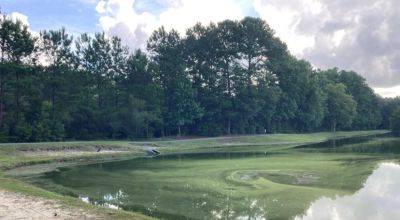
“Why Is My Pond Water Green?”
For a pond owner, sunny summer days can mean fishing with kids, canoe trips, and picnics under a shady tree by the water. However, those hot summer days also lead to pond owners calling the Extension office asking: “Help! Why is my pond water suddenly green?”
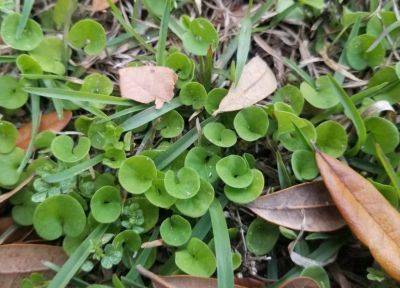
Weed of the Month – Dichondra
Dichondra (Dichondra repens) is a semi-evergreen, mat-forming perennial. It is a member of the morning glory family and is native to New Zealand. Dichondra grows well in moist soils, tolerates shade, and can be used as a lawn alternative.
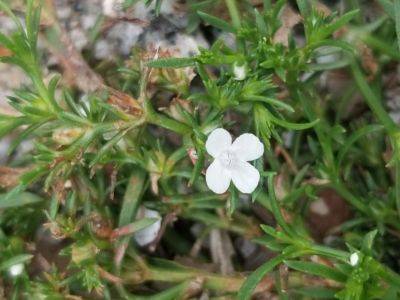
Weed of the Month- Rustweed
Rustweed or juniper leaf is a native plant that earns its name from orange coloring in the fall. It is a drought-tolerant summer annual or short-lived perennial plant. It is found throughout the southeastern United States on mostly open, disturbed sites. Rustweed is considered a ruderal species, meaning that it colonizes open ground and does not handle competition well. Research has shown that rustweed seeds can remain viable in the soil for over one hundred years, just waiting for optimal conditions.
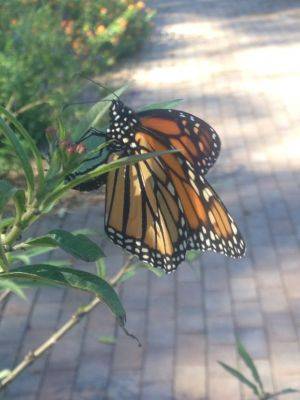
You Can Help the Monarch Butterflies
In July 2022, the International Union for the Conservation of Nature (IUCN) drew attention to North America’s migrating monarchs by adding them to their ICUN Red List of Threatened Species. In the United States, the more immediate plight of other threatened and endangered species has precluded the monarchs’ inclusion on the Endangered Species List. However, the U.S. Fish and Wildlife Service acknowledged that their place on this list is “warranted.” They mandated that the monarchs be reviewed annually as a potential candidate for inclusion. These incredible insects migrate 4000 miles every spring and fall and face immense dangers on this epic journey. What simple steps can you take to help monarchs as they travel past your home?
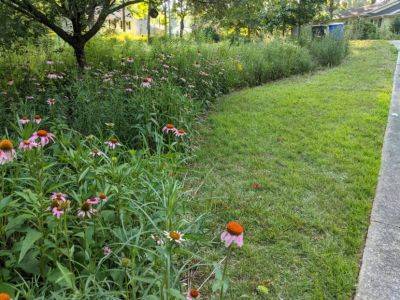
K.I.S.S. the Lawn: The Lazy Gardener’s Lawn
Turfgrass… Blah. Amiright!? Kidding, but I have a confession to make. Once upon a time, I got a degree in Horticulture… Turfgrass. A golf course summer internship quickly determined that maintaining the same 18 holes of turfgrass and dodging golf balls was not for me!
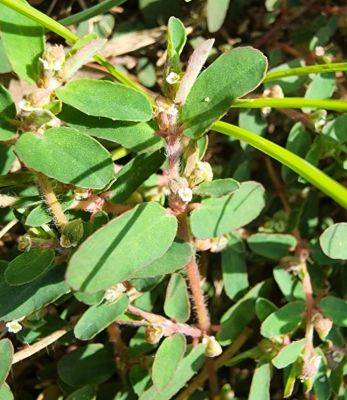
Weed of the Month – Prostrate Spurge
Prostrate spurge (Chameasyce maculatais) a low-growing, mat-forming, annual summer weed. It grows from a taproot that can grow to a depth of 18 inches and can spread as much as three feet across. It has milky, white sap, and the stems can be smooth or hairy. The leaves have a toothed margin; some can contain a reddish spot, earning it the pseudonym spotted spurge.
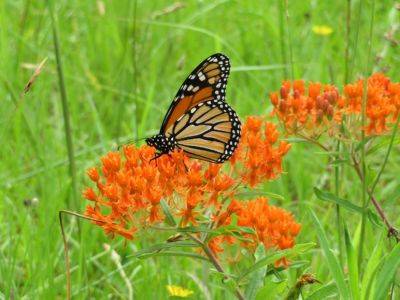
The Monarch Highway
The Monarch Highway is busy this time of year. So, keep an eye out while you are driving or outdoors. First, you may only see one, but keep watching, and eventually, you will see them fluttering by in masses. Monarch butterflies are probably the most recognizable and beloved butterflies in the world. Monarchs are currently making one of the most magnificent migrations of any animal in the world. Some travel close to 3,000 miles to their wintering grounds in Mexico. The Upstate of South Carolina along the Blue Ridge Mountains is one of their prime migration corridors and fueling stops on their journey south. This migration is unique because, unlike whales or other large mammals, who have previous generations to learn from and guide them, the monarchs making this migration have no help and are making this trip for the very first time. They are making the same journey that their great-great-grandparents made the previous fall. This ‘super generation’ of monarchs will make this journey south only once in their life. Next fall, it will be their great-great grandchildren’s turn.

Weed of the Month – Wild Garlic
Wild garlic (Allium vineale) is a winter, perennial weed that looks like a clump of blue-green grass. Native to Europe and east Asia, this weed is commonly found throughout the Southeast. It was brought to North America in soil used as ballast weight in sailboats. The dirt would be removed, and cargo would take its place on return journeys to Europe.
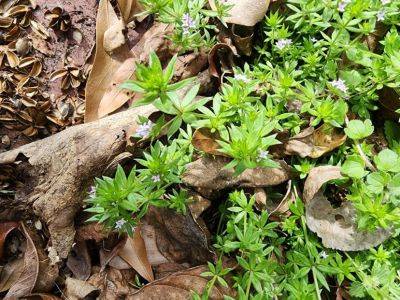
Weed of the Month – Field Madder
Field madder (Sherardia arvensis)is a mat-forming, prostrate winter annual. It has four to six leaves that whorl around a square stem. It produces lavender to pale pink flowers. In addition, field madder produces fleshy roots that can be used to make a weak red dye.
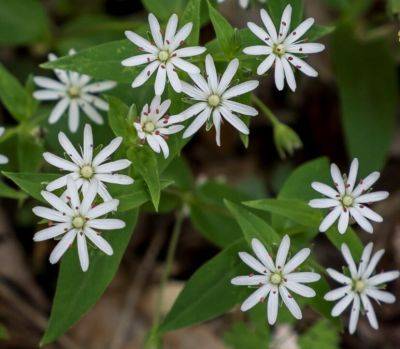
A Desirable Chickweed, Who Knew?
There are many spring wildflowers that grow in the mixed hardwood forests of South Carolina. Spring ephemerals are woodland herbaceous plants that emerge in early spring with flowers and foliage and put on a spectacular, but short, show in the sunny forest before the tree leaves shade the forest floor. Other spring woodland flowers keep their foliage through the growing season. One of my favorites is chickweed.
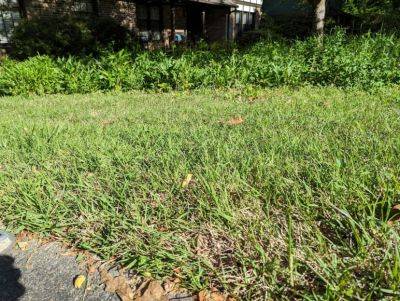
A Lazy Gardener Considers the Subtleties of the Season
South Carolina gardeners often get excited towards the end of February when temperatures climb into the 60s and 70s but know spring is still a month away. As tempting as it is, it is understood February is too early to get started.
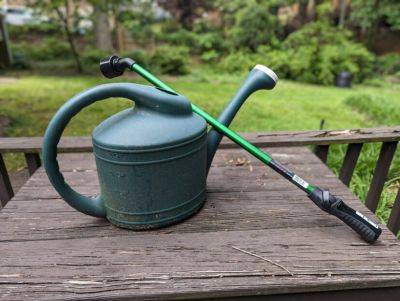
K.I.S.S. Landscape Irrigation: A Lazy Gardener’s Irrigation System
Unpopular opinion incoming… I don’t enjoy summer in South Carolina. I prefer cool, crisp fall or spring days or cold winter days to summer’s oppressive heat and humidity. But it’s coming, and with it often comes the gross misuse of the ubiquitous automated irrigation system.
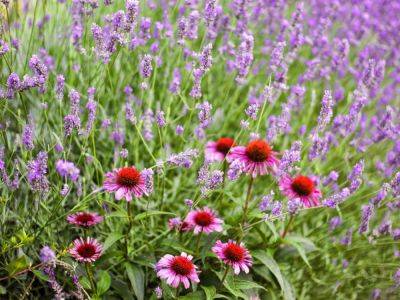
Water-Wise Garden Ideas That Save Water & Boost Curb Appeal
Natural precipitation rates vary around the world, but no matter how much rain a region gets annually, we all share the responsibility to use it wisely. Water-wise gardening – sometimes called xeriscaping – uses innovative conservation techniques and sound gardening practices to create a beautiful landscape while conserving water. For water wise landscaping ideas, read on.
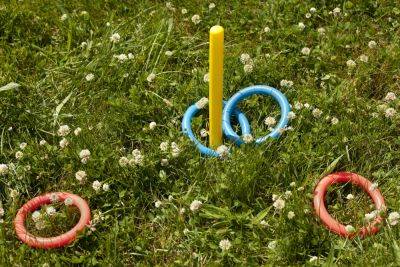
The Summer Outdoor Game You Need, Based on Your Zodiac Sign
Summer is here, which can only mean one thing—outdoor gatherings galore! If you're a fan of hosting, you know that while great food and company are always required, it doesn't hurt to have some entertainment options on hand, too.

Doodle by andre: that’s some sweet ride!
FEELING DEFEATED BY YOUR LAWN around now, when it seems to grow overnight? Apparently Mr. and Mrs.

What about lawns?
I replied:“Good idea…I will put it on my to-do list. Meantime my favorite lawn resources are Safe Lawns (a non-profit promoting organic care), and Cornell Cooperative Extension (assuming you are in a northern region like mine). The Cornell site includes chemical and non-chemical options; you know where
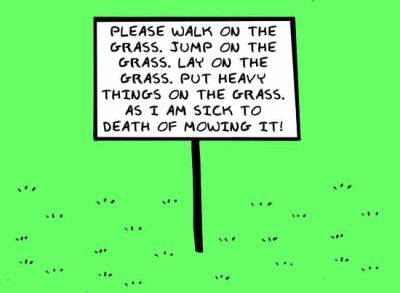
Doodle by andre: entering the no-mow zone
YES, PLEASE; HAVE YOUR WAY WITH MY LAWN, TOO; I hear you, Andre. As much as I basically like to mow, I don’t like it as much as the grass apparently liked to grow this wet, cool year.
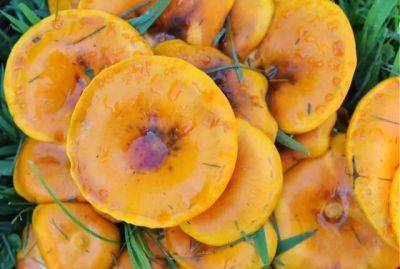
Fascinating fungus: a mushroom update
Perhaps it’s Omphalotus olearius–the jack-o-lantern mushroom. Silly me: I forgot to photograph the underside–to see if there were true gills beneath the cap and how the stem and cap attached to each other–but it had disappeared before I realized my oversight a couple of weeks later. (UPDATE 9/10/11: From commenter Kristy, the suggestion is that these could be honey fungus, or Armillaria; read about those here. The colony was about 20 feet from the nearest tree, a spruce, but I’m still going with Omphalotus.)I’ll hope for its return next year, and if it ever stops raining, I’ll be sure to be more detail-oriented when admiring the growing collection of fungi who have joined me in my garden.You may recall my fascination with (yup!) fungus: read all about it.Categoriesmushrooms & other fungi
Popular Topics
Welcome to DIYGarden.cc, your ultimate guide to creating and maintaining a lush and vibrant lawn. A well-kept lawn is not only visually appealing but also provides numerous benefits for gardens, parks, and urban areas.
A lawn is an area of land that is covered with well-maintained grass or other low-growing plants. Lawns are typically found in residential, commercial, or recreational spaces and are often used for aesthetic purposes, outdoor activities, and as a place for relaxation.
They are commonly associated with gardens, parks, and yards. Lawns are usually mowed regularly to maintain a uniform height and appearance. They can be created by seeding or laying sod, and proper irrigation and fertilization are often required to keep the grass healthy and green.
Lawns are popular in many cultures and are often seen as a symbol of a well-maintained and pleasant outdoor space.
A well-maintained lawn transforms your outdoor space into a captivating oasis. With our comprehensive tips, you are equipped to create a thriving and picturesque lawn that will be the envy of the neighborhood. For more in-depth guidance and inspiration, explore the diverse resources available at DIYGarden.cc. Start your journey towards a beautiful lawn today!
Our site greengrove.cc offers you to spend great time reading Lawn latest Tips & Guides. Enjoy scrolling Lawn Tips & Guides to learn more. Stay tuned following daily updates of Lawn hacks and apply them in your real life. Be sure, you won’t regret entering the site once, because here you will find a lot of useful Lawn stuff that will help you a lot in your daily life! Check it out yourself!
